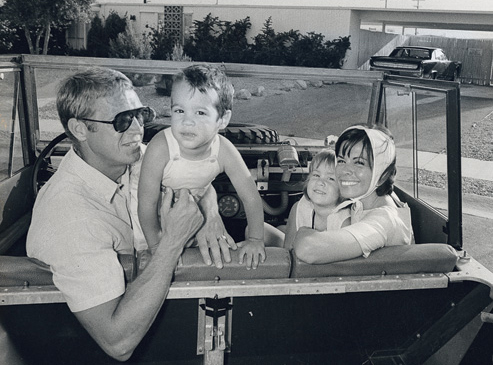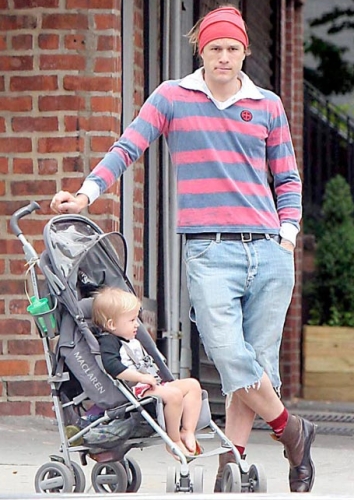 “The Journey of a star, captured in a flash”. Annie Leibovitz and Mikhail Baryshnikov. Annie’s studio, New York
“The Journey of a star, captured in a flash”. Annie Leibovitz and Mikhail Baryshnikov. Annie’s studio, New York
 “Is there any greater journey than love?” Steffi Graf and Andre Agassi. New York
“Is there any greater journey than love?” Steffi Graf and Andre Agassi. New York
 “There are journeys that turn into legends”. Sean Connery, Bahamas Islands
“There are journeys that turn into legends”. Sean Connery, Bahamas Islands
 “Every journey began in Africa”- Ali and Bono. Uganda
“Every journey began in Africa”- Ali and Bono. Uganda
 “A journey bring us face to face with ourselves”. Mikhail Gorbachev, Berlin, Germany
“A journey bring us face to face with ourselves”. Mikhail Gorbachev, Berlin, Germany
 “Some stars show you the way”. Muhammad Ali and a rising star. Phoenix, Arizona
“Some stars show you the way”. Muhammad Ali and a rising star. Phoenix, Arizona
 “Three exceptional journeys. One historic game”. Pelé, Diego Armando Maradona and Zinadine Zidane. Madrid, Spain
“Three exceptional journeys. One historic game”. Pelé, Diego Armando Maradona and Zinadine Zidane. Madrid, Spain
 “Some journeys change mankind forever”. Sally Ride, Buzz Aldrin and Jim Lowell. California
“Some journeys change mankind forever”. Sally Ride, Buzz Aldrin and Jim Lowell. California
 “A single journey can change the course of a life”. Angelina Jolie. Cambodia
“A single journey can change the course of a life”. Angelina Jolie. Cambodia
 “Inside every story, there is a beautiful journey”. Sofia Coppola and Francis Ford Coppola. Buenos Aires, Argentina
“Inside every story, there is a beautiful journey”. Sofia Coppola and Francis Ford Coppola. Buenos Aires, Argentina
Louis Vuitton Core Values campaigns revisit the brand’s heritage with a completely fresh interpretation of the concept of travel in an emotional sense, viewed as a personal journey, a process of self-discovery. The campaign debuted in September 2007 in major international titles featuring no other but the former Soviet statesman Mikhail Gorbachev, the French movie siren Catherine Deneuve, the founding member of The Rolling Stones Keith Richards and the tennis power couple Andre Agassi and Steffi Graf, among many other influential and famous people.
Pietro Beccari, Senior VP of Communication explains this shot: “Not only does it capture the unique quality of a father-daughter relationship, in which both are enriched by a shared experience, but it also evokes the heritage of Louis Vuitton with its suggestion of know-how being passed from one generation to the next.”
Celebrating the 40th anniversary of Apollo 11’s first steps on the Moon, the ad features legendary astronauts Sally Ride (first American woman in space), Buzz Aldrin (Apollo 11, first steps on the Moon, 1969) and Jim Lovell (Apollo 13) looking up in the Californian desert night sky.
In 2010 Brazil’s Pelé, Argentina’s Diego Maradona and France’s Zinedine Zidane all won football’s ultimate prize, and all wore the emblematic N°10 shirt. They met up in the Café Maravillas, a typical bar in Madrid, and were tempted into a game of table football. The image leaves the suspense intact, but clearly captures the atmosphere of fun and friendly rivalry.
Given the photographer of all Core Value campaigns personal and financial troubles in 2010, Louis Vuitton wished to offer support in the most positive way and suggested that Annie Leibovitz become the next campaign’s hero. She accepted on the condition that she appears alongside for friend and one of the foremost dancers of the 20th century, Mikhail Baryshnikov.
This is the first time U2 frontman Bono has appeared in an ad sans his bandmates, but instead with his wife Ali Hewson. It’s also the first time that a label other than Louis Vuitton is getting a fashion credit – the pair are wearing their own clothing line Edun, a line of ethical fashion. Proceeds from the sales will go to TechnoServe, which supports sustainable farming in Africa.
As the pioneer of the art du voyage, Louis Vuitton is always on the look out for the exceptional people with extraordinary journeys. The question is who will be next?











































 Peter Som, United Bamboo, Imitation of Christ, Jeffrey Chow, Behnaz Sarafpour and Sebastian Pons
Peter Som, United Bamboo, Imitation of Christ, Jeffrey Chow, Behnaz Sarafpour and Sebastian Pons















 Truman Capote portrayed by Irving Penn, 1965
Truman Capote portrayed by Irving Penn, 1965














